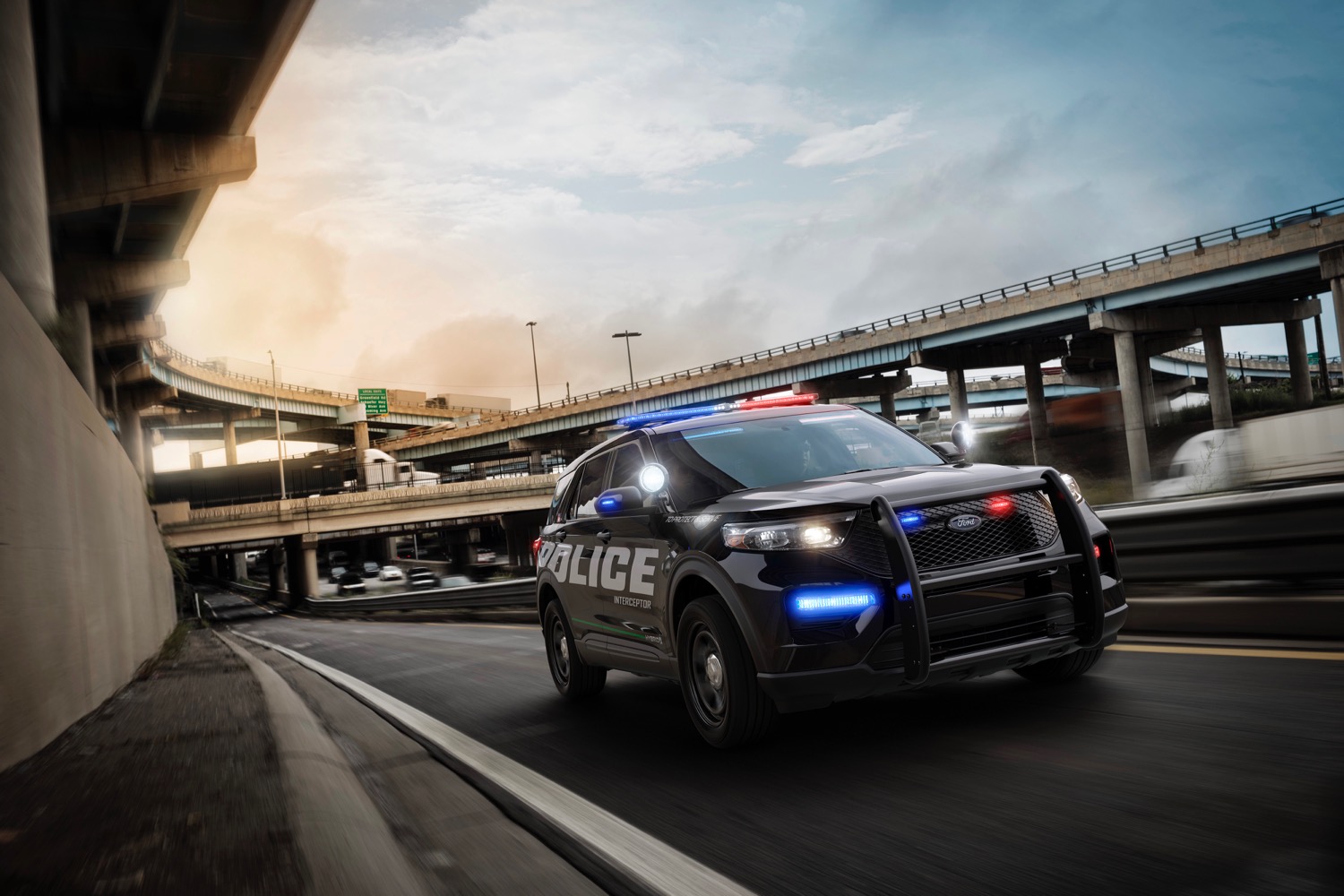Get used to seeing this face in your rearview mirror.
The 2020 Ford Police Interceptor Utility is the latest in a long line of police cars from the Blue Oval. Based on the 2020 Ford Explorer (which makes its public debut January 9), the new cop car shows that Ford is serious about shifting from sedans to SUVs in both its civilian and law-enforcement vehicle lineups.
It may not be as svelte as a sedan, but the 2020 Police Interceptor Utility does make an effort to achieve good gas mileage. Ford will offer it with a 3.3-liter V6 hybrid powertrain, as well as a non-hybrid version with the same engine, and a 3.0-liter twin-turbocharged V6. All powertrains are teamed with a 10-speed automatic transmission and all-wheel drive.
Ford didn’t release much in the way of specifications, but it did say the Police Interceptor Utility will achieve up to 24 mpg combined, which the automaker claims is a 41 percent improvement over the 3.7-liter V6 version of the outgoing-generation model. Ford also said that the Michigan State Police tested the 2020 model, and found it to have the quickest zero to 100 mph acceleration, fastest lap and average lap times, and highest top speed (137 mph) of any police SUV. That’s impressive, considering that some competitors offer bigger V8 engines.
To protect its users, the Police Interceptor Utility features sensors that monitor a 270-degree area around the vehicle. The system notifies cops if it detects nearby movement. It also turns on the rearview camera, locks the doors, rolls up the windows, and shows where the potential threat is located via a digital instrument cluster.
The Police Interceptor Utility is also available with many of the same driver-assist features as civilian cars, including autonomous emergency braking, pedestrian detection, and forward collision warning. Unlike civilian drivers, who typically have to dig through screen menus to disable these features, police officers get a special switch that turns everything off, should the need arise. Another feature that isn’t standard on civilian cars is a wheel and tire package designed to handle an 8.0-inch curb impact, median crossing, or driving over a railroad crossing at 30 mph.
The 2020 Ford Police Interceptor Utility hits the streets this summer as the heir to an important cop-car legacy. The Ford Crown Victoria dominated the police market before it went out of production in 2011. Ford has tried to fill that gap with a variety of vehicles, but it seems to be settling on SUVs like the Explorer-based Police Interceptor Utility. That’s not surprising, given that Ford plans to virtually eliminate cars from its North American civilian lineup. But will cops approve?





